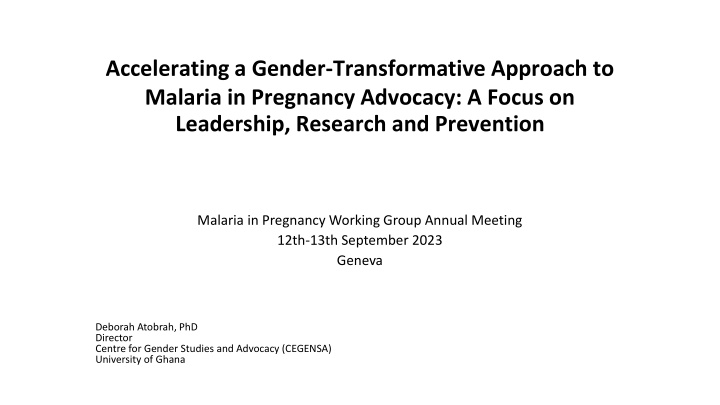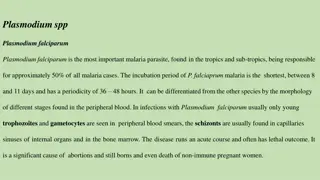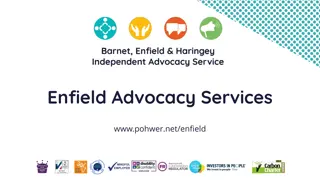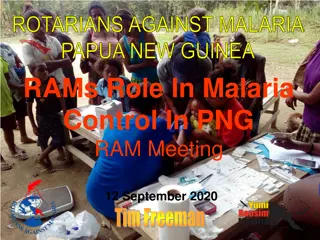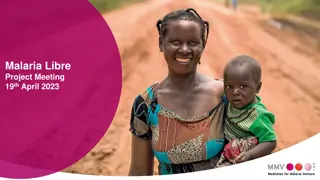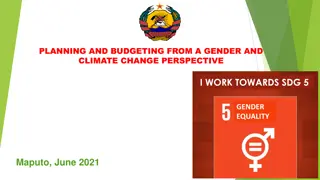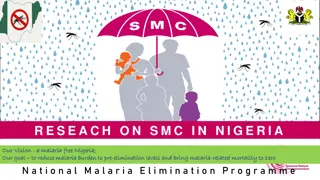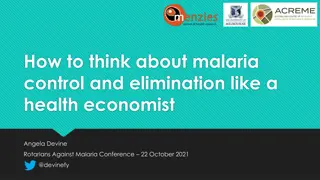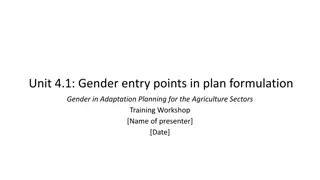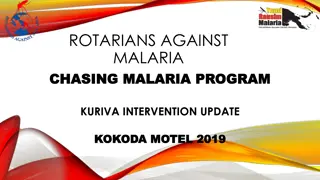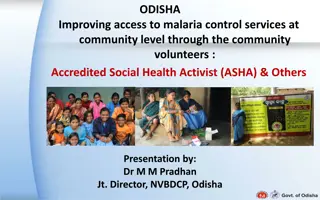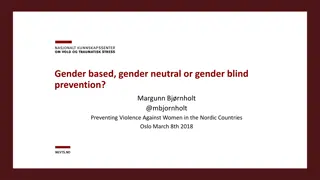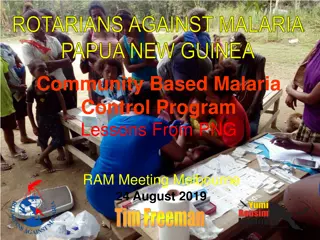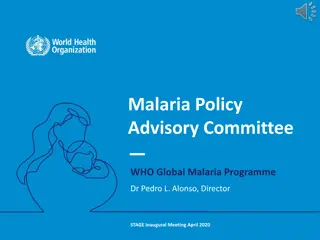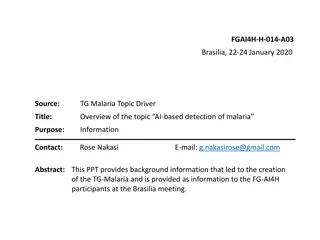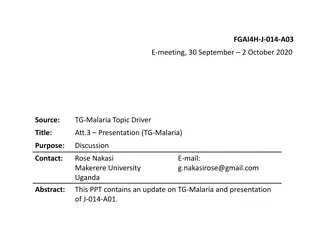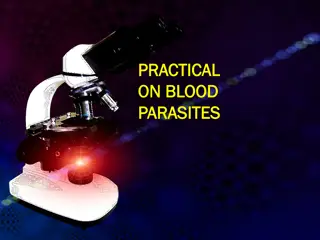Gender-Responsive Malaria Advocacy: Accelerating Progress
Accelerating gender-transformative approaches in malaria advocacy, focusing on leadership, research, and prevention in pregnancy. Strategies include promoting gender-balanced representation, deploying gender champions, and enhancing gender responsiveness in all aspects of malaria research ecosystem.
Download Presentation

Please find below an Image/Link to download the presentation.
The content on the website is provided AS IS for your information and personal use only. It may not be sold, licensed, or shared on other websites without obtaining consent from the author.If you encounter any issues during the download, it is possible that the publisher has removed the file from their server.
You are allowed to download the files provided on this website for personal or commercial use, subject to the condition that they are used lawfully. All files are the property of their respective owners.
The content on the website is provided AS IS for your information and personal use only. It may not be sold, licensed, or shared on other websites without obtaining consent from the author.
E N D
Presentation Transcript
Accelerating a Gender-Transformative Approach to Malaria in Pregnancy Advocacy: A Focus on Leadership, Research and Prevention Malaria in Pregnancy Working Group Annual Meeting 12th-13th September 2023 Geneva Deborah Atobrah, PhD Director Centre for Gender Studies and Advocacy (CEGENSA) University of Ghana
Accelerating gender-balanced representation in MiP leadership. Priority 1: Strengthen political will for gender-balanced representation in MiP leadership among policymakers, researchers, scientists, and workforce: Advocacy Activities: Develop tailored talking points on the value add of gender-balanced representation in malaria leadership at all levels and engage governments, civil society, donors, and partners to share the message. Landscape current barriers to entry for would-be women leaders in key sectors for malaria-endemic countries and high transmission communities, also for retention
Priority 2: Deploy gender and malaria (MiP) champions strategically positioned to support and influence decision-making partnership with government agencies, relevant organizations, and communities. Advocacy Activities: Identify, recruit, and finance new voices of gender and malaria championship across a broad spectrum of age groups, with a focus on those representing local communities with high malaria burden Create a global mentorship program to bridge the experience of current leaders to the potential of adolescents and the next generation.
Accelerate gender Accelerate gender- -responsiveness in all aspects of responsiveness in all aspects of MiP research research ecosystem Priority 1: Gender considerations in malaria research & development should be nuanced to make considerations for heterogeneity, paying attention to the unique conditions of pregnant and lactating women. MiP Advocacy Activities: To stimulate interest in MiP-related research, especially in the behavioral sciences to deepen understanding on contextual behavioral factors on MiP. Raise awareness on the gap in antimalarial medicines and data affecting women of reproductive age and pregnant and lactating women
Accelerate gender Accelerate gender- -responsiveness in all aspects of responsiveness in all aspects of MiP research research ecosystem MiP Develop guidelines for malaria vaccine R&D, introduction, delivery, and monitoring that are gender-sensitive, including community engagement and with a focus on women and adolescents. Combine situational and gender analysis methods to inform and support funding for malaria R&D that includes neglected populations including pregnant and lactating women. Convene donors to pool funding for new research to fill gaps in understanding the gender related aspects of malaria.
Advance malaria prevention & treatment with local gender considerations at the center, particularly for pregnant women Priority 1: Tailor malaria prevention, education, diagnosis, and treatment programs to local gender dynamics for pregnant women. Advocacy Activities: Landscape gender dynamics of risk and exposure at local and community level and align prevention strategies accordingly. Consider how traditional gender roles link to risk (e.g., cooking, fieldwork, child birth and care etc.). Landscape household decision-making patterns to understand the hidden dynamics of household agency, including intrahousehold dynamics and understanding what self-efficacy means contextually.
Create pathways for gender-equitable participation and professional advancement for the malaria workforce, including community healthcare workers Priority 1: Build skills and capacity of community health workers and clinic staff on country-specific gender- sensitive strategies and policies for MiP prevention and treatment. Advocacy activities: Develop gender-focused and balanced training approaches, materials, and support for CHWs. Include scenarios where gender dynamics may impact access to services (e.g. due to caregiving responsibilities or prioritization within the household for accessing services). Establish a mentoring program for CHWs through facility linkages with HCWs.
Create pathways for gender-equitable participation and professional advancement for the malaria workforce, including community health Priority 2: Improve gender balance in CHW and other networks required to bolster MiP outcomes Advocacy activities: Advocate for proper remuneration that will incentivize equitable participation and advancement CHW regarding compensation, professionalization, and increased workforce. Make sex-parity an explicit criterion for recruitment and for the recruitment panels themselves.
Some reflection questions What has been our experience with pursuing these priorities? How could we promote the advocacy agenda for MiP? What are the likely barriers we face?
